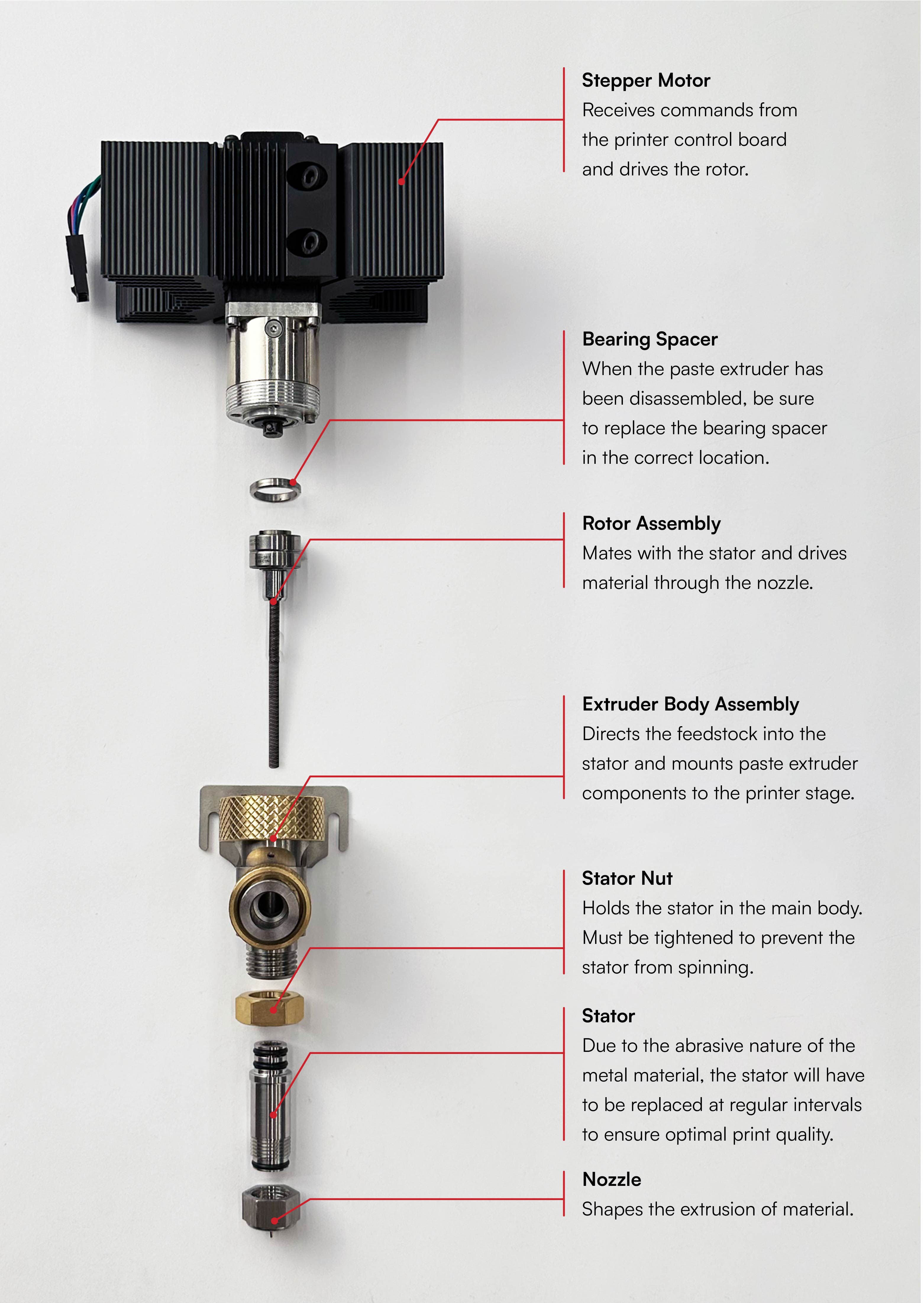The Rapidia Printer is composed of four main components: the cabinet, the material bay, the printer, and the Paste Extruders. It is important to understand all four components to properly use the printer and to troubleshoot any issues that may arise.
¶ The Cabinet
The cabinet contains the printer cabinet control panel, the paste feed pressure gauges, the water reservoir, the charge pump, and the water filter.
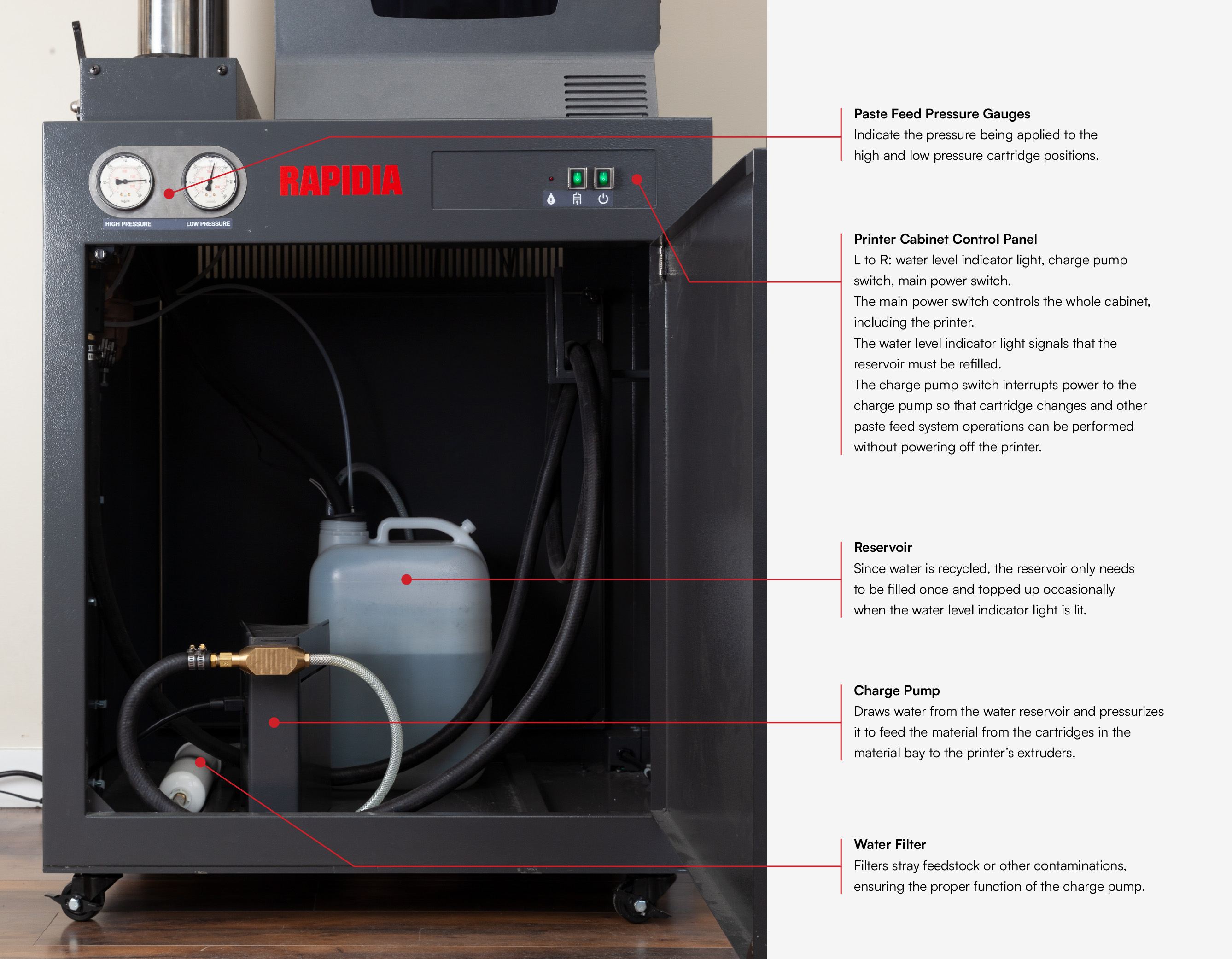
Pressure can be adjusted independently for the high- and low-pressure circuits. This is done inside the cabinet, with the high pressure being controlled with a knob on the back of the control panel, and the low pressure being controlled using the screw on the regulator located on the opposite side of the cabinet:
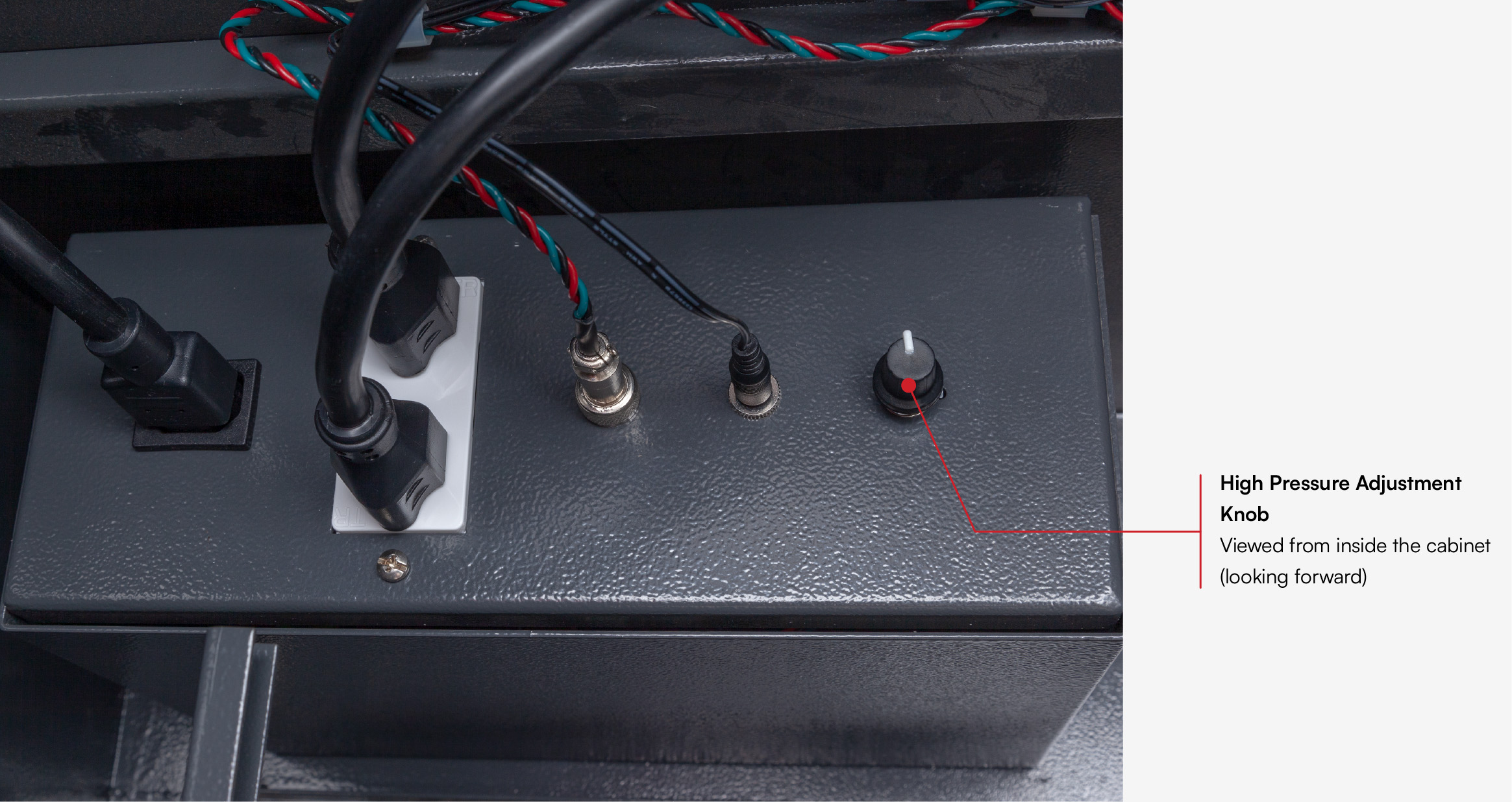
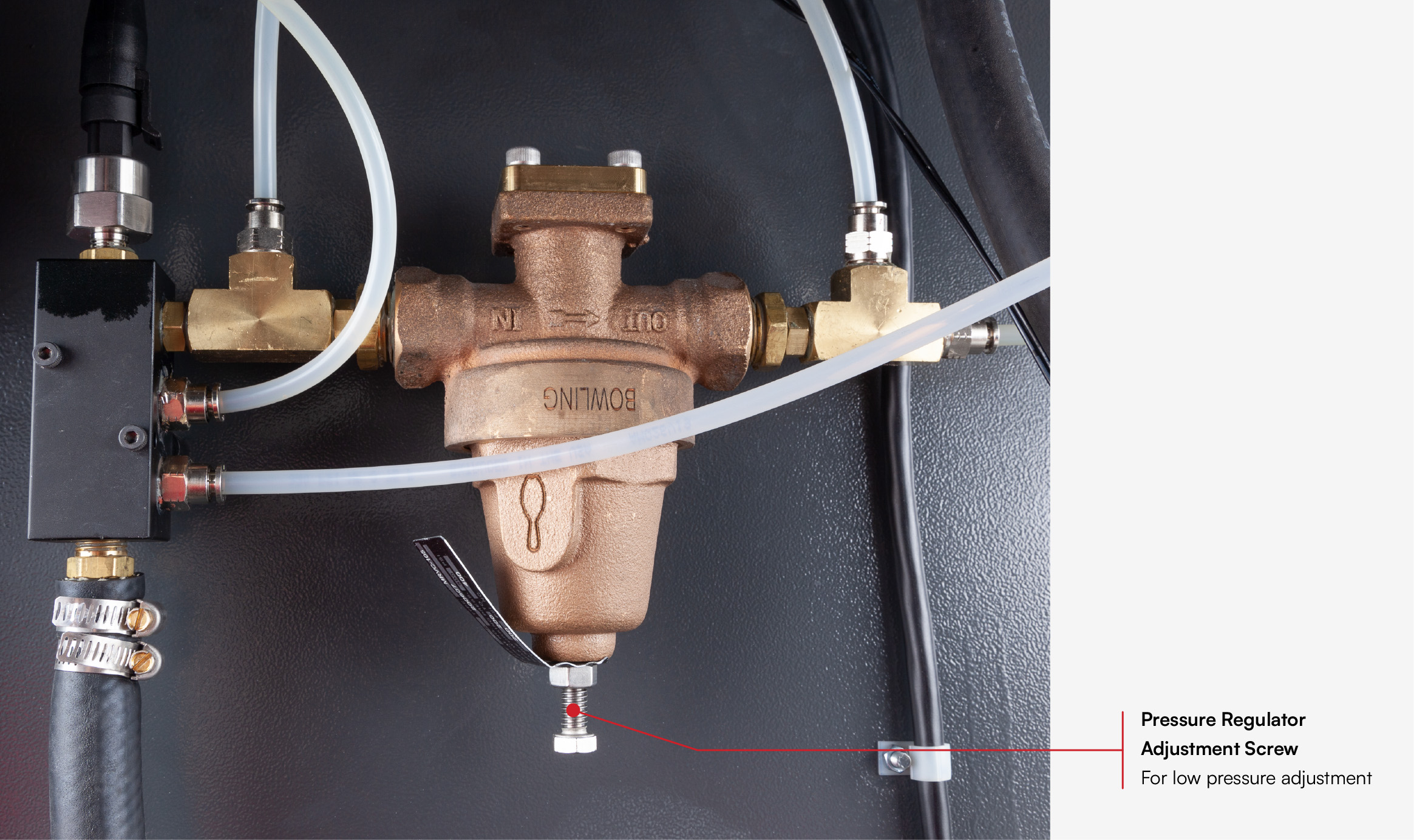
¶
The Material Bay
The material bay comprises four positions in which material cartridges can be loaded. While only two can be used by the printer at once, the extra positions are available for easy storage of additional cartridges. Each cartridge is secured to its position in the material bay using a large cartridge nut. The cartridge feeds material to the metering valves through a hose. The material bay contains positions for high and low pressure. Both pressures can be set by the user as some materials may require different pressures to feed the metering valve. By default, metal materials should be loaded into the low pressure slots (the three forward positions), and support material should be loaded into the high pressure position (the rear position). The charge pump only provides pressure to the cartridges that are “active”. To activate a cartridge, simply lift the corresponding material selection lever. In the picture below, the front and back cartridges are both active.
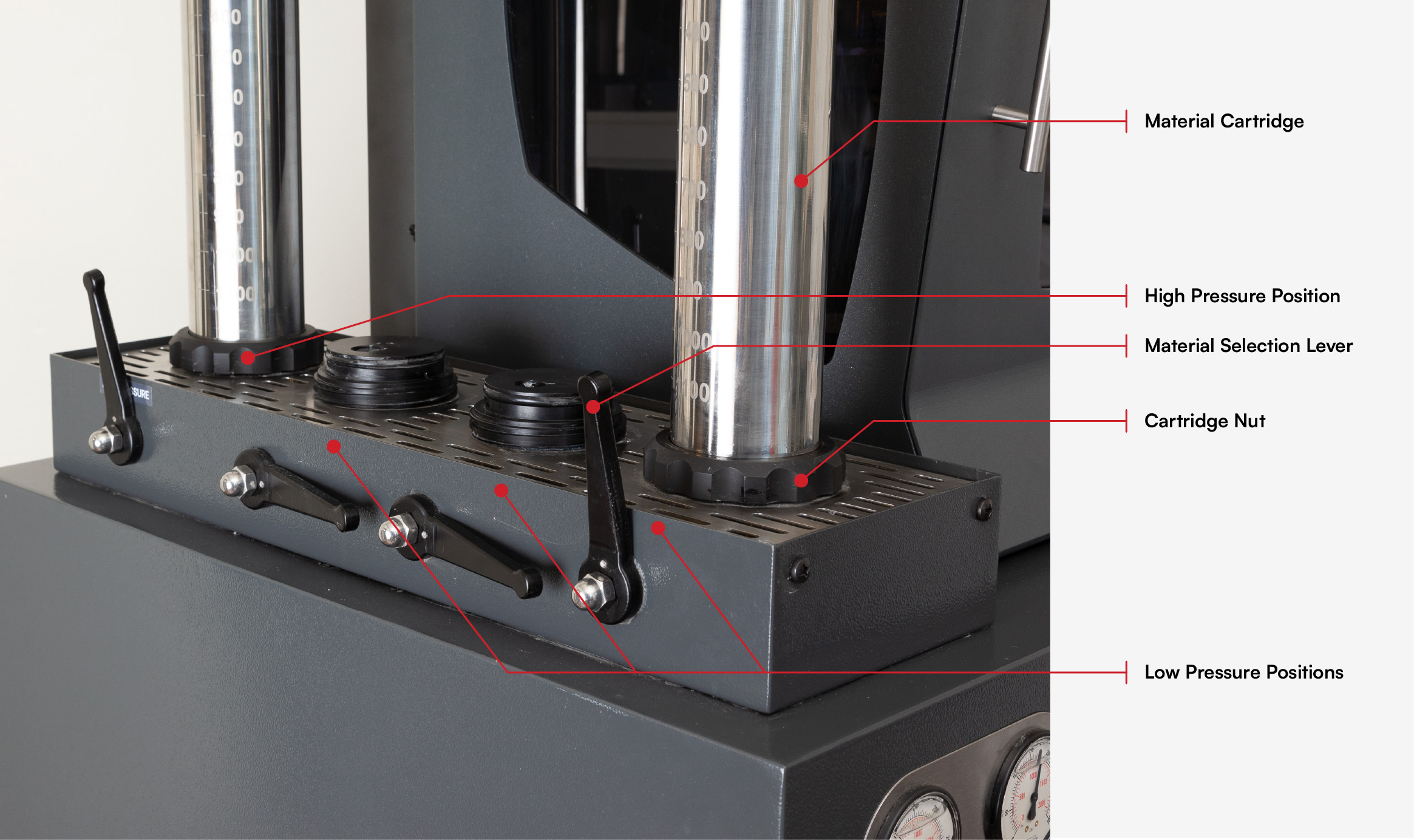
¶
The Printer
The printer receives communication from an external computer and controls both the XYZ stages and paste extruders to build the part layer by layer. Heat from the print bed, as well as a drying lamp, dries parts as they are being printed. Read about the process in our Introduction.
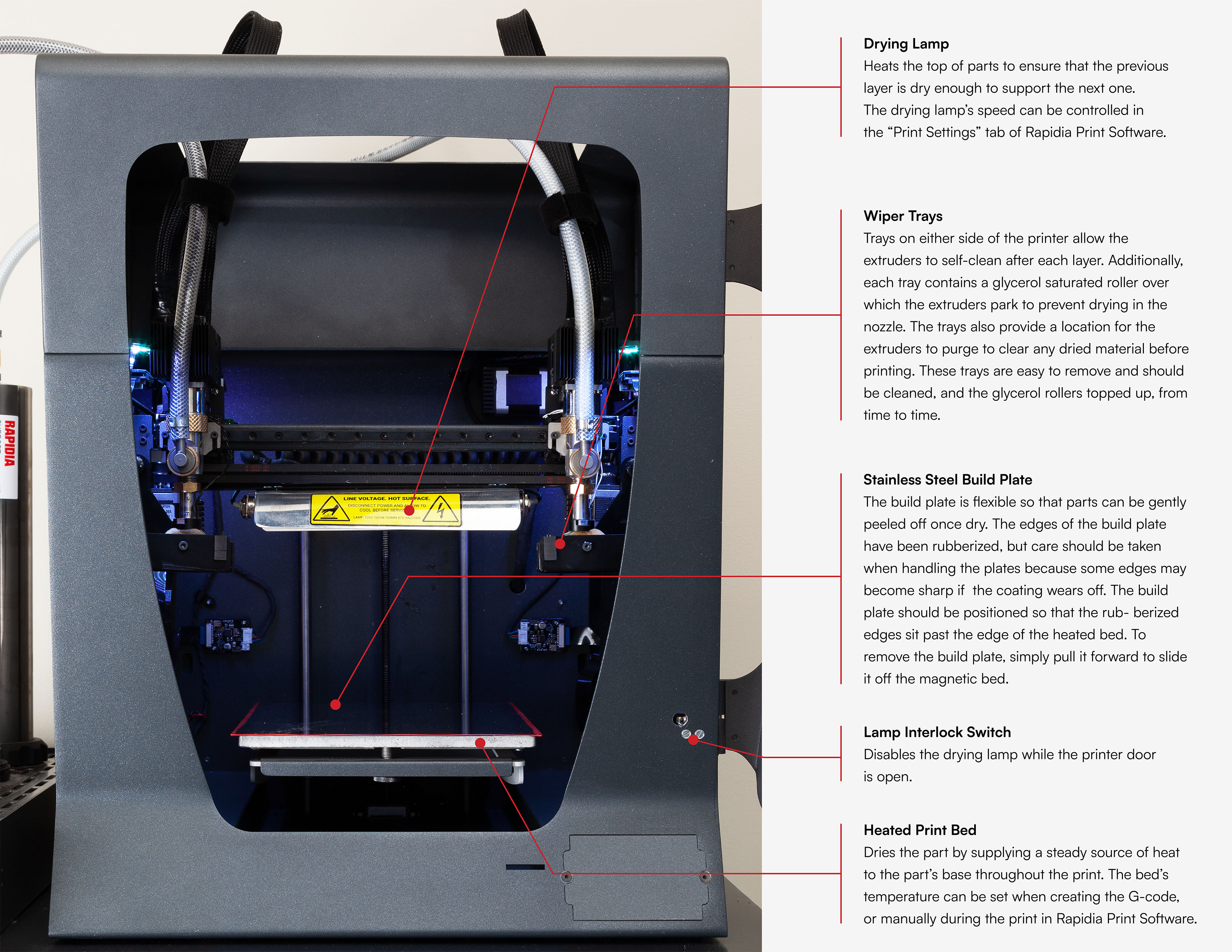
¶
Paste Extruders
The paste extruders accurately dispense metal and support material as the XYZ stages move in the shape of each of the part’s cross sections. They must be calibrated to produce high quality parts.
